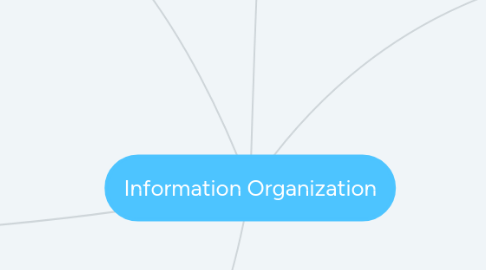
1. What?
1.1. Library
1.1.1. Academic
1.1.2. Public
1.1.3. Special Interest
1.1.4. Legal
1.1.5. Medical
1.2. School
1.2.1. Primary
1.2.2. Secondary
1.3. Government Organisations
1.3.1. State Surveillance/Security
1.3.2. Financial Service Institutions
1.3.2.1. Pensions
1.3.2.2. Banks
2. Why?
2.1. Community Growth
2.2. Public Learning
2.3. Surveillance
2.4. Profit
2.5. Public Relations
2.6. Metadata
2.7. Accessibility
2.8. Stimulates creativity
2.9. Library Bill of Rights
3. How?
3.1. Personal data collection
3.2. Efficient record keeping
3.3. Document Storage
3.4. Classification Systems
3.4.1. Dewey Decimal System
3.4.2. Brian Deer Classification System
3.4.3. Library of Congress Classification System
4. Where?
4.1. Physical
4.1.1. Libraries
4.1.2. Museums
4.1.3. Businesses
4.2. Virtual
4.2.1. Index
4.2.2. OPACS
4.2.3. Search Engines
4.2.4. Online Databases
4.2.5. Social Media
5. Who?
5.1. Librarians
5.1.1. Reference Librarians
5.1.2. Children and Youth Librarians
5.1.3. Adult Services Librarians
5.1.4. Emerging technology librarians
5.1.5. Subject specialists (law, medicine) librarians
5.1.6. Collections Development Librarians
5.1.7. School Librarians
5.1.8. Prison Librarians
5.1.9. Corporate Librarians
5.2. Technicians
5.3. Pages
5.4. Circulation
5.5. Volunteers
5.5.1. Student volunteers
5.5.2. Community volunteers
5.6. Human Resources
5.6.1. HR manager
5.6.1.1. HR rep
5.6.2. PR specialist
5.7. Data Analysts/ Strategists
5.8. Information Architects
5.9. Library assistant
5.10. Organizations
5.10.1. OLA
5.10.1.1. OCULA
5.10.1.2. OHLIA
5.10.1.3. OLBA
5.10.1.4. OLITA
5.10.1.5. OPLA
5.10.1.6. OSLA
5.10.2. ALA
5.10.2.1. YALSA
5.10.3. CLA
